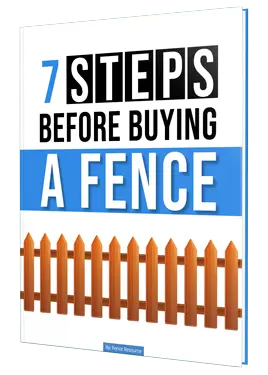Palisade fencing is a style of security fence with tightly spaced vertical uprights, called pales. Pales come in various shapes and sizes. The security level you are trying to achieve will determine what shape and how close the pales will be.
Each pale has a specific design cut into the top. Designs range from flat tops to trident styles and splayed tips with sharp points. As result, making palisade fencing very difficult to climb over.
Today’s palisade fencing is manufactured from steel. However, that wan’t always the case.
Wood Palisade Fencing
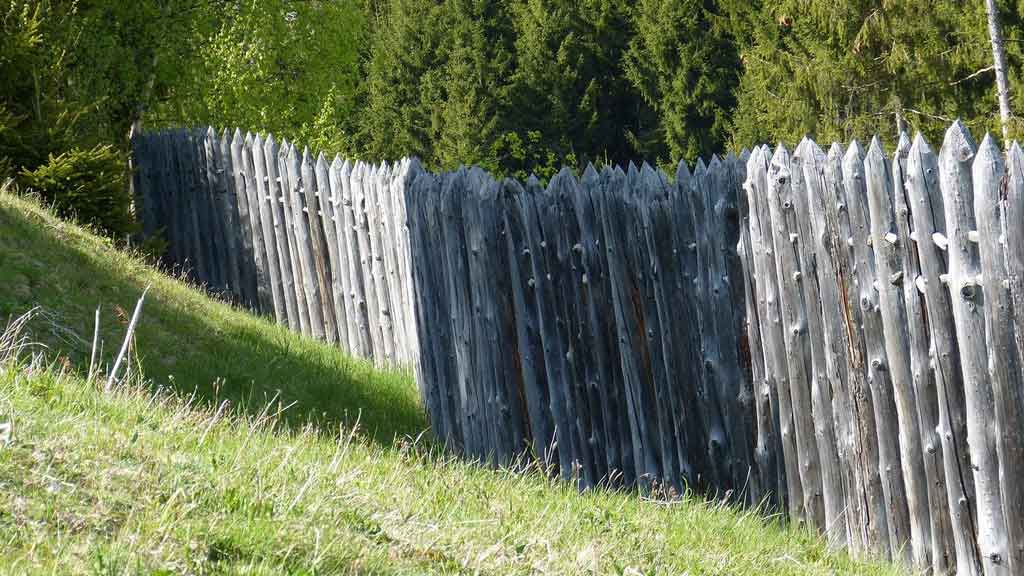
Palisade fencing has been around for centuries. Mainly used as a defense mechanism to protect forts and villages from attacks.
However, sometimes castles used it as temporary fencing during construction. Therefore, providing protection until more permeant stone walls where built.
Before the invention of steel, wood was the go to choice. And for good reason. It was readily available in most areas. As a result, small trees and wooden stakes were used to form the pales.
Aligned in rows, they formed barrier walls. Pales placed close together made it harder to climb. Because the pales had little to no spaces for fingers or toes, getting a foothold or handhold needed for climbing was difficult.
The pales also had sharp points cut on top to further discourage climbing of the fence. This resulted in an intimidating defense barrier used to fight off attackers.
However, wood fence had one major flaw. It was prone to fire and easily burned down.
Steel Palisade Fencing
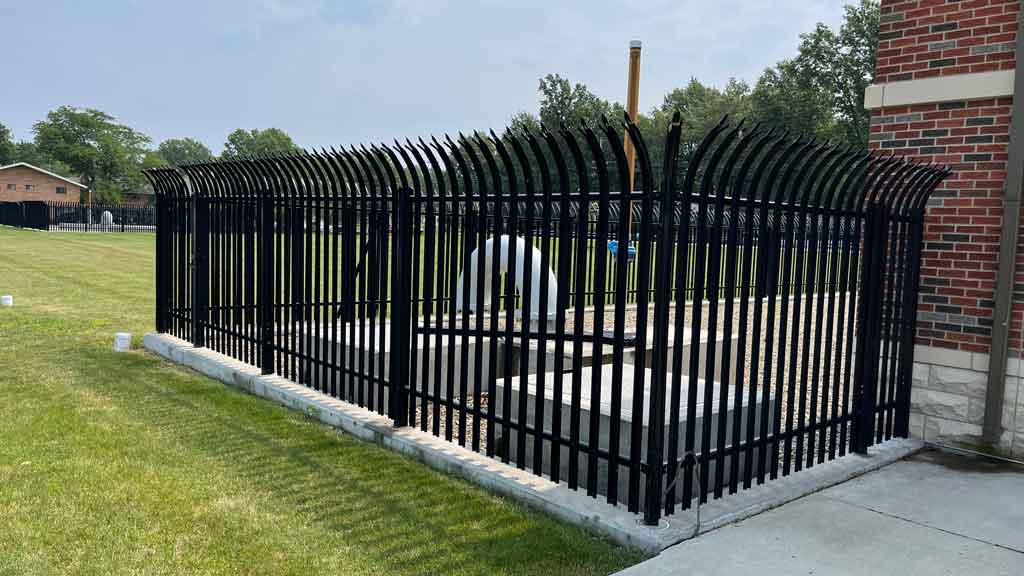
Today, palisade fencing is made from steel. Stronger than wood, fire proof and readily available for manufacturing.
The framework consists of posts, rail and the pales. There are two main design offerings for the pales. A “D” shape and a “W” shape. The extra ridges in the W shaped pale gives it more strength.
Pale tops are also available in different styles. Straight pales, splayed tips and curved pales are all options. However, the splayed tip with a three pointed spear top is the best at providing maximum security.
Each pale bolts into place on the rails to form the palisade fencing panel. The distance between the pales determines how secure the fence is.
Just like the original wood design, the closer the pales are together, the harder it is to climb. Panels, come in 8′ wide lengths. Heights are available from 4′ tall to 12′ tall depending on the manufacturer.
Palisade fencing naturally presents an intimidating and strong look. However, for even more security and intimidation, adding curved pales is an option.
Curved pales have a radius at the top that point outwards. Much like adding barbed wire to a fence, it makes it very difficult to get over. Furthermore, it makes a bold statement to keep out!
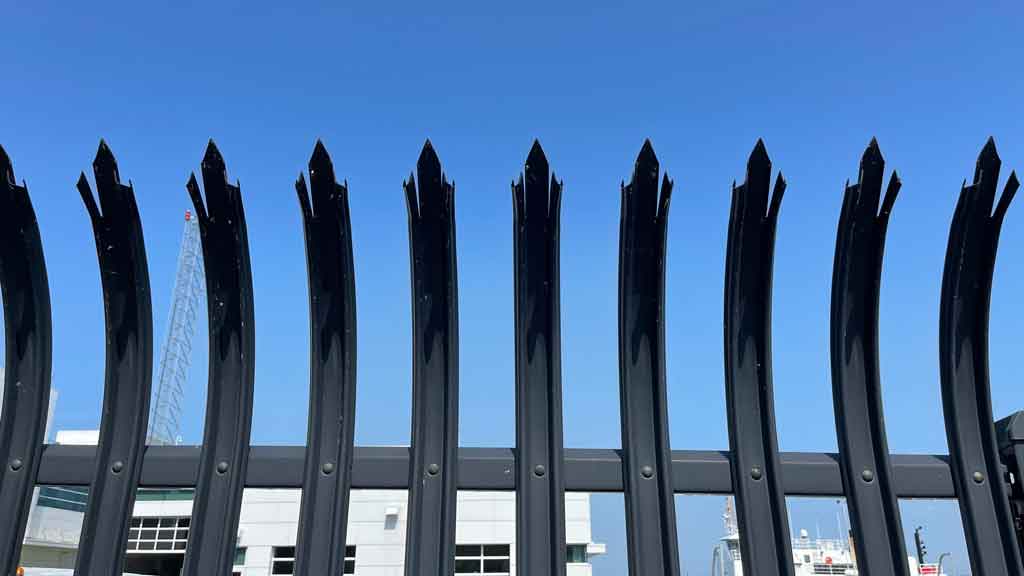
Color Options for Palisade Fencing
Palisade fencing is for high security situations. Therefore, being strong is a requirement. It also has to last a long time.
Coated fence components help fight against rust and corrosion. There are two common types of coatings. Hot dipped galvanized is the first.
Galvanized fence has a silver color when new. After some time in the weather and elements, it fades, turning a dull gray color.
The other option is to apply a PVC coating to the fence. PVC coatings provide a protective layer overtop of the steel components.
Furthermore, PVC coatings come in colors. As a result, manufacturers offer palisade fencing in multiple color choices. However, black is the most popular color.
Palisade Gates
Gates come in three styles. Single gates, double gates and cantilever sliding gates. Single gates are for pedestrian access. Made from a single gate panel called a gate leaf. Standard widths for single gates are 3′,4′ and 5′ wide.
Double gates are simply two single gate leafs that meet in the middle. However, there is no need for a center support post.
As a result, double gates easily cover twice the span that singles gates do. Double gates allow access of vehicles and larger equipment such as landscaping or construction equipment.
Cantilever sliding gates roll parallel to the fence line when opening and closing. Therefore, they require less room in front or behind the fence to operate.
Cantilever gates cover wider spans than double gates. A span of 30′ or greater is easily accommodated with a cantilever gate.
Often found at large facilities, when controlled by an electric gate operator, they open and close faster than swing gates. As a result, reducing the chances of a security breech.
Where to Use Palisade Fencing
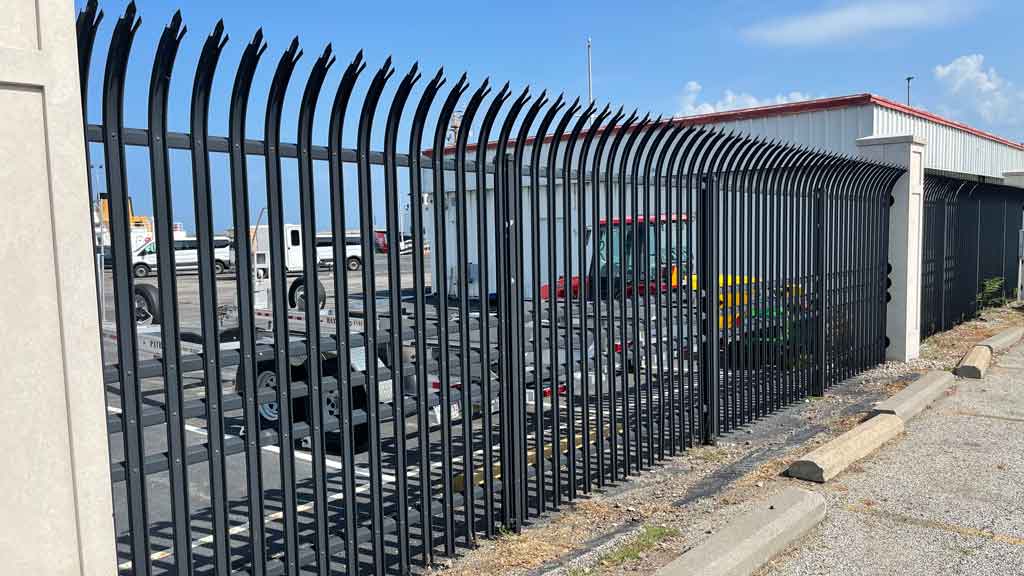
There are many applications for palisade fencing. Airports and train stations are popular places for it. Facilities and organizations of high security surround their perimeters with palisade fencing. Even schools use it to protect children from unwanted outside visitors.
Some countries, actually recommended it instead of solid fences and walls. The spacing between the pales provides a visual aspect that prevents hiding spots and dead zones within the fence line. Pretty much anywhere security is a top priority will benefit from palisade fencing.
Optional steel cables installed through the horizontal rails add even more strength. Strong enough to prevent a vehicle from penetrating palisade fencing. Eliminating the need for a guardrail.
Conclusion
Palisade fencing is the ultimate choice when it comes to high security and protection. Not only is it nearly impossible to scale, it also sends would be challengers a bold message to KEEP OUT!
A more attractive option than other types of security fences. It is often found in cities around government and public utility relation businesses and properties.
It’s steel components are made to last. Therefore, providing years of trouble free security. Providing safety and peace of mind to anything within its confines.

